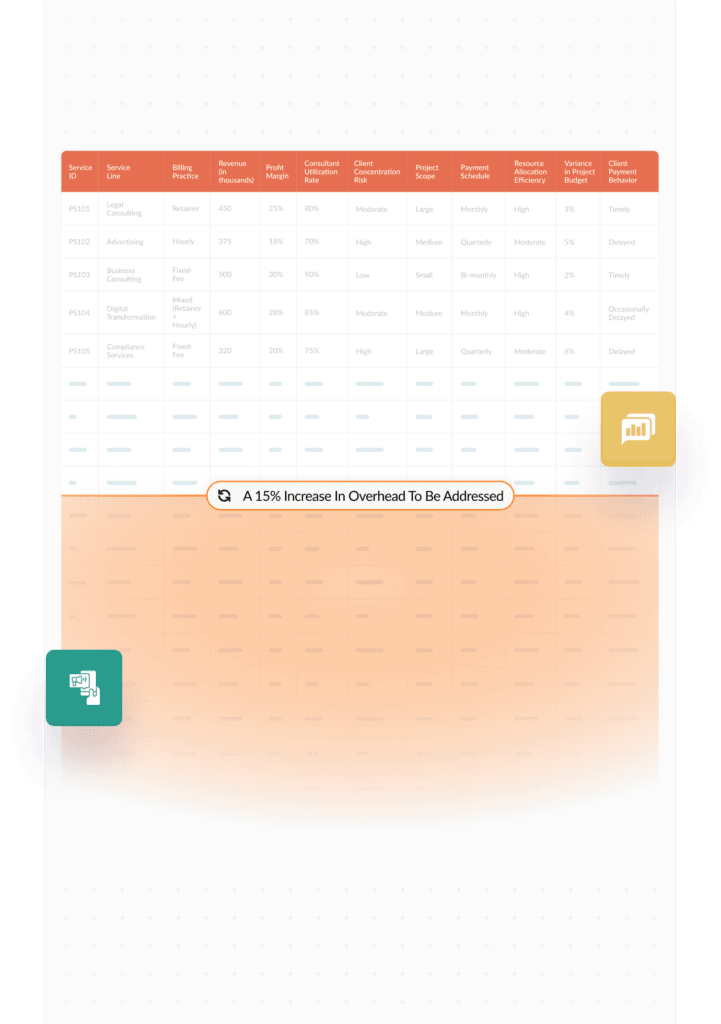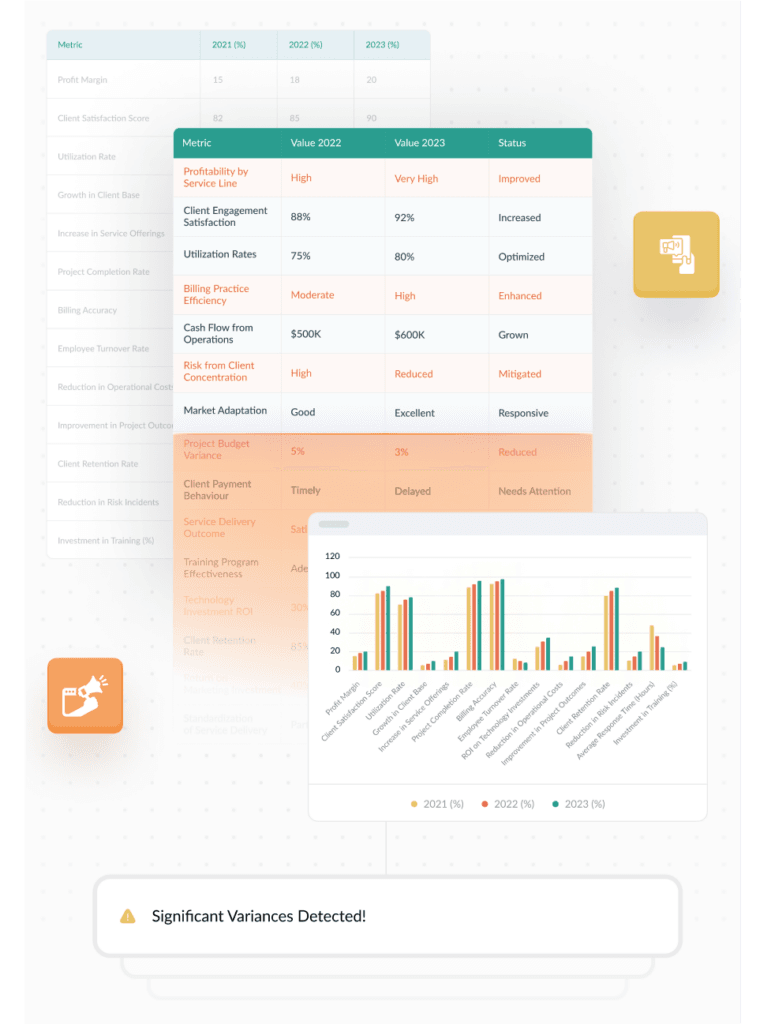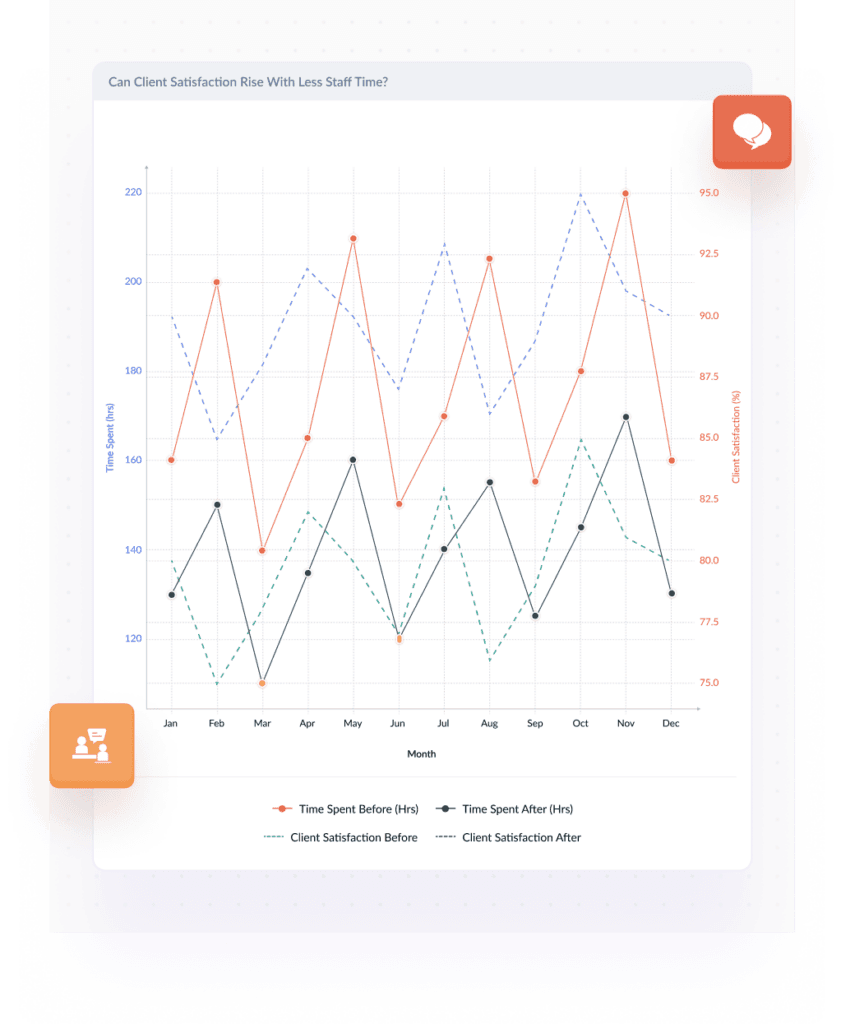Professional Services
Legal, Consulting, Advertising, and Business Services

Financial & Capital Analytics
Analyze profitability
by service line to identify high-margin areas and optimize resource allocation delivery
by specific client engagements to refine pricing strategies
Assess cash flow implications of different billing practices like retainer versus hourly
Conduct profitability analysis on fixed-fee versus hourly billing to guide pricing strategy adjustments
Strategize on reducing overreliance on key clients to mitigate revenue volatility
Optimize consultant utilization rates across multiple projects to minimize downtime and ensure profitability
Assess risk associated with client concentration and implement strategies to mitigate potential revenue volatility
Investigate evolving client needs in areas such as digital transformation and compliance to develop targeted services
Analyze market trends in outsourcing and technology adoption within the industry to guide service development
Examine client industries for emerging needs that can be met by developing specialized services
Catalog competitor service offerings and pricing strategies to identify competitive advantages and areas for improvement
Construct dynamic financial models tailored for varying project scopes and client payment schedules
Develop financing strategies that support agile staffing and capability development without compromising cash reserves
Structure capital to support service development and technology investments without compromising liquidity
Analyze funding options for expansion, focusing on maintaining optimal balance between debt and equity
Evaluate financial partnerships and alliances that can enhance service delivery and client access
Implement robust mechanisms to track and analyze project budget and schedule variances to maintain client trust and project integrity
Structure capital to support service development and technology investments without compromising liquidity
Adjust resource allocation and project management strategies based on findings from variance analysis
Evaluate client payment behaviors and its impact on cash flow, adjusting financial forecasts and client credit terms accordingly
Perform detailed risk assessments on client financial stability to preempt and manage potential payment delays or defaults
Identify financial risks associated with large, complex projects and client concentration
Analyze potential M&A opportunities to expand capabilities, enhance specialized service capabilities, and enter new markets
Assess integration challenges and financial impacts of proposed mergers or acquisitions
Process Mining
Gather data from billing systems, project management software, and client interaction logs to capture detailed records of service delivery
Filter and organize the data to reflect the flow of activities in client projects, from initial consultation through to the delivery of final reports
Develop a process model that illustrates the typical project lifecycle in services such as legal, consulting, or advertising
Analyze the adherence to best practices and service agreements, examining how actual processes match up with client expectations and contractual obligations
Identify areas for improving client interaction, streamlining project management, or optimizing billing practices to enhance client satisfaction and operational efficiency


Business Intelligence
Summarize billing hours, client satisfaction scores, and service delivery outcomes to gauge overall business performance and client engagement
Analyze fluctuations in service demand or client turnover by investigating market trends, client feedback, and internal process efficiencies
Use past project outcomes and client interactions to predict future service demands and client needs, optimizing resource allocation and service offerings
Start specific workforce training programs or client relationship management strategies based on trends identified through predictive analytics
Integrate data from project results, market conditions, and client feedback to infer underlying patterns that inform service innovation and strategic planning
Streamlining
Analyze service delivery processes like client intake, case handling, project management, and outcome evaluation to identify slow or redundant procedures
Use software to automate time tracking, billing, document management, and customer relations management. In legal fields, document automation tools can prepare standard contracts quickly
Implement metrics such as billable hours, client retention rates, campaign return-on-investment (ROI), and project completion rates to monitor and optimize performance
Reduce layers of management by integrating similar service lines or merging roles that overlap significantly, such as in marketing and communications
Develop standardized procedures for client onboarding, project reporting, and outcome assessments to ensure consistency and reliability in service delivery
Establish regular feedback mechanisms with clients via reviews and surveys, and internal reviews with staff to refine services and adapt to client needs dynamically
Evaluate the effectiveness of streamlining efforts against client satisfaction and business growth. Adjust methods and strategies based on these insights to better meet client expectations and industry standards

